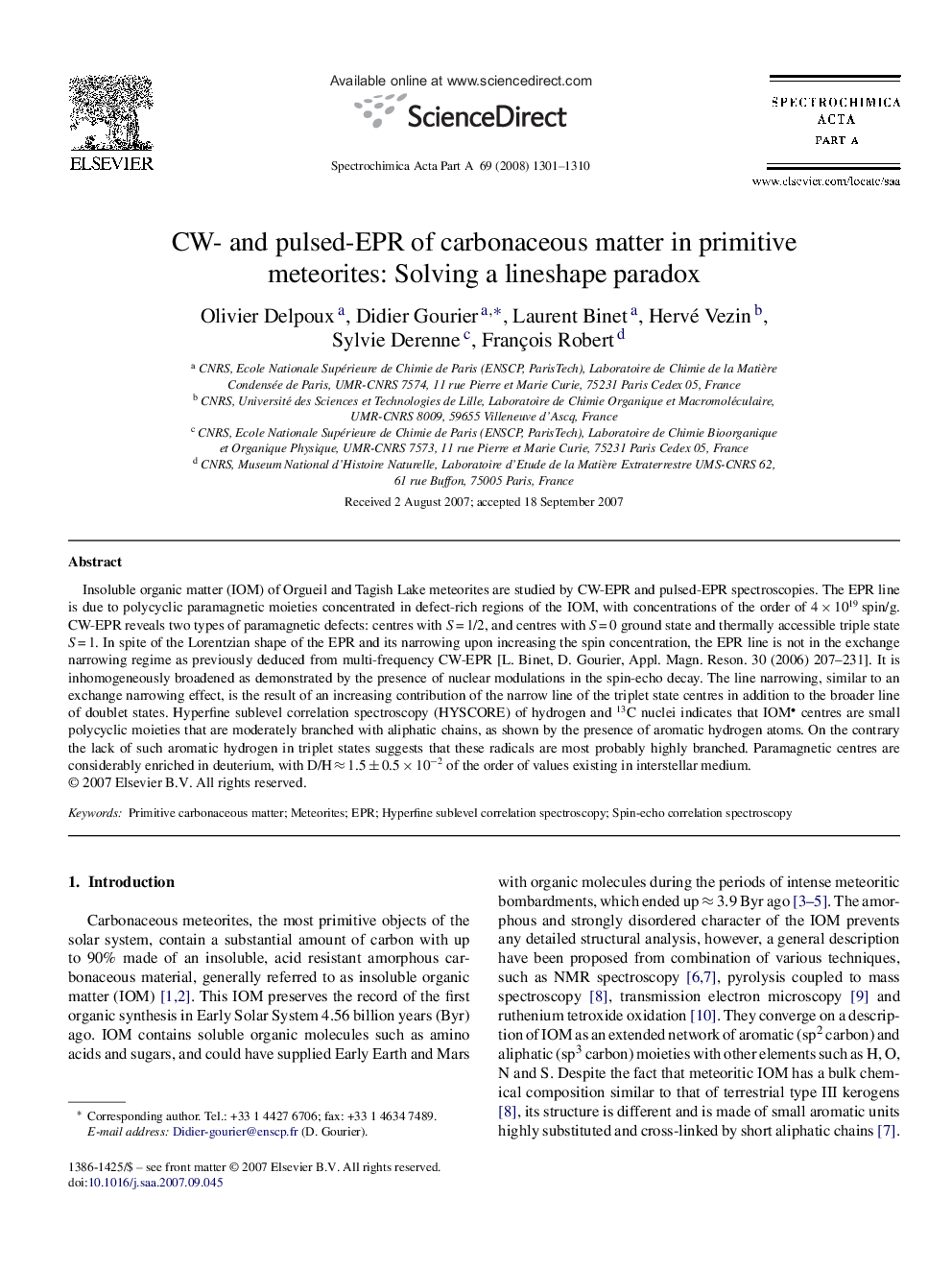| Article ID | Journal | Published Year | Pages | File Type |
|---|---|---|---|---|
| 1238228 | Spectrochimica Acta Part A: Molecular and Biomolecular Spectroscopy | 2008 | 10 Pages |
Insoluble organic matter (IOM) of Orgueil and Tagish Lake meteorites are studied by CW-EPR and pulsed-EPR spectroscopies. The EPR line is due to polycyclic paramagnetic moieties concentrated in defect-rich regions of the IOM, with concentrations of the order of 4 × 1019 spin/g. CW-EPR reveals two types of paramagnetic defects: centres with S = 1/2, and centres with S = 0 ground state and thermally accessible triple state S = 1. In spite of the Lorentzian shape of the EPR and its narrowing upon increasing the spin concentration, the EPR line is not in the exchange narrowing regime as previously deduced from multi-frequency CW-EPR [L. Binet, D. Gourier, Appl. Magn. Reson. 30 (2006) 207–231]. It is inhomogeneously broadened as demonstrated by the presence of nuclear modulations in the spin-echo decay. The line narrowing, similar to an exchange narrowing effect, is the result of an increasing contribution of the narrow line of the triplet state centres in addition to the broader line of doublet states. Hyperfine sublevel correlation spectroscopy (HYSCORE) of hydrogen and 13C nuclei indicates that IOM centres are small polycyclic moieties that are moderately branched with aliphatic chains, as shown by the presence of aromatic hydrogen atoms. On the contrary the lack of such aromatic hydrogen in triplet states suggests that these radicals are most probably highly branched. Paramagnetic centres are considerably enriched in deuterium, with D/H ≈ 1.5 ± 0.5 × 10−2 of the order of values existing in interstellar medium.
